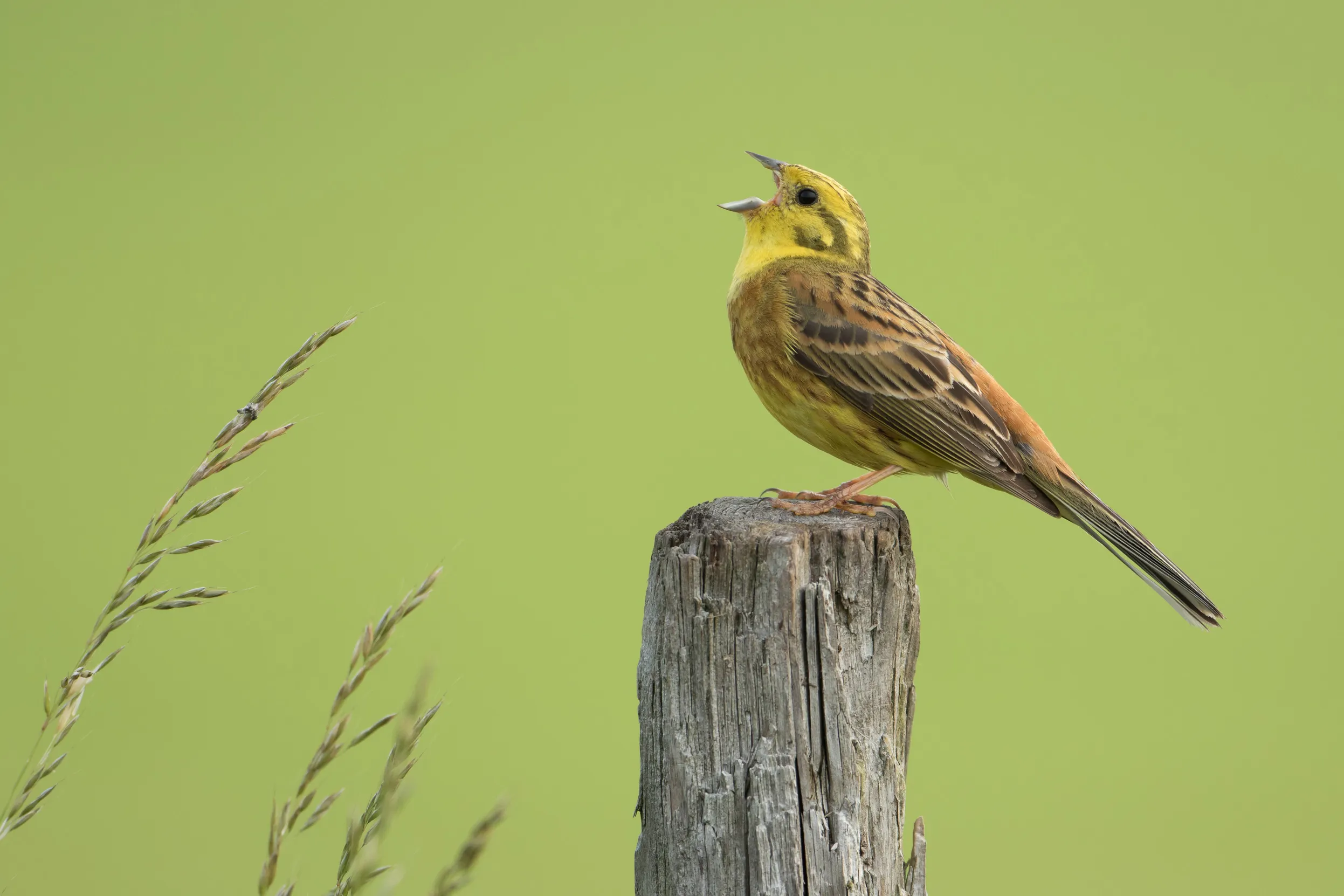
Yellowhammer conservation - Advice for farmers
The yellowhammer is widely distributed on all farmland types. Densities are higher in lowland areas.

On this page
Yellowhammers in brief
The UK yellowhammer population has declined by 61% since 1967. The main factor is low overwinter
survival, probably because fewer seed food sources are available to them on farmland.
Key points
- Maintain short, thick hedges and ditches with wide margins for nesting.
- Flower-rich margins are better for insects than grass margins.
- Do not trim hedgerows before September, as the late nests of yellowhammers are the most
What this species needs
Thick hedges with ditches or wide margins for nesting
Yellowhammers nest on or close to the ground in ditch vegetation or at the base of short, thick
hedgerows and scrub. They are most commonly found in hedgerows which have a wide margin or
ditch. They often breed until the end of August, so cutting hedges before the end of August can
destroy nests.
Lots of seeds throughout the year
Adults feed mainly on seeds throughout the year, especially cereal grain. They seek places where
they can find lots of seed food, such as winter stubbles, root crops, wild bird cover, weeds in the crop margin, areas where grain is spilt or where cereals are fed to cattle. Yellowhammers rarely use
improved pastures and grass leys, as these do not provide any seed food.
Insects and spiders in the spring and summer
Yellowhammer chicks depend largely on insects for food. Adults also feed on insects in the breeding
season. Wide margins around arable fields provide many insects as well as nesting habitat. A variety
of field margins including tussocky grass margins and flower-rich margins will provide habitat for a
wider range of insects.

How to help
On arable land
- Provide important winter feeding habitat by spraying and cultivating stubbles as late as possible. Where overwinter stubbles are not a viable option, create seed-rich wild bird cover crops (or wild bird seed mixtures). An annual crop established each spring with a high proportion of spring cereals (wheat, barley and/or triticale) in the seed mix will be best for yellowhammers and other buntings. Linseed or a brassica, such as rape or mustard, will broaden the benefits for finches and other seed-eating birds.
- Create grass margins around arable fields to increase food and nesting habitat for yellowhammers. A mix of tussocky grass margins and flower-rich margins is ideal. Yellowhammers are more likely to use margins which have a short, thick hedge and an adjacent ditch.
- It is best to leave the half of the margin closest to the hedge uncut for up to 5 years to form mature tussocks, but cut the crop-side half annually between September and March.
- Adopt conservation headlands to boost insect abundance in the crop margin. Avoid spraying the outer 6m of cereal fields with insecticides or herbicides targeted at broad-leaved weeds. This enables beneficial insects and chick food for yellowhammers to survive.
On grassland
- Introduce arable fodder crops or small plots of wild bird cover to provide a seed-rich habitat in pastoral areas. Maize is not of value to yellowhammers unless it is undersown with a seed-bearing crop.
- Fence off margins of up to 6m around improved grassland and leave these unfertilised, uncut and ungrazed. Graze or cut in September every two to three years. Avoid cutting all margins in the same year. Select margins which have short thick hedges and ditches.
Hedgerow management
- Provide hedgerows of differing sizes around the farm. Yellowhammers favour hedgerows less than 2m tall.
- All hedge, ditch and field margin management should be avoided between 1 March and 31 August because of nesting birds. Yellowhammers nest well into August, and later nests tend to be the most successful, so delaying cutting until at least 1 September is particularly important for them.
- Trim hedgerows only once every two to three years. Avoid trimming all hedges in the same year.
- Maintain a thick base to hedgerows. Management such as laying or coppicing can restore a dense structure at the base of a hedge.
- Avoid laying or coppicing all hedges in the same year. Undertake management on a long rotation.